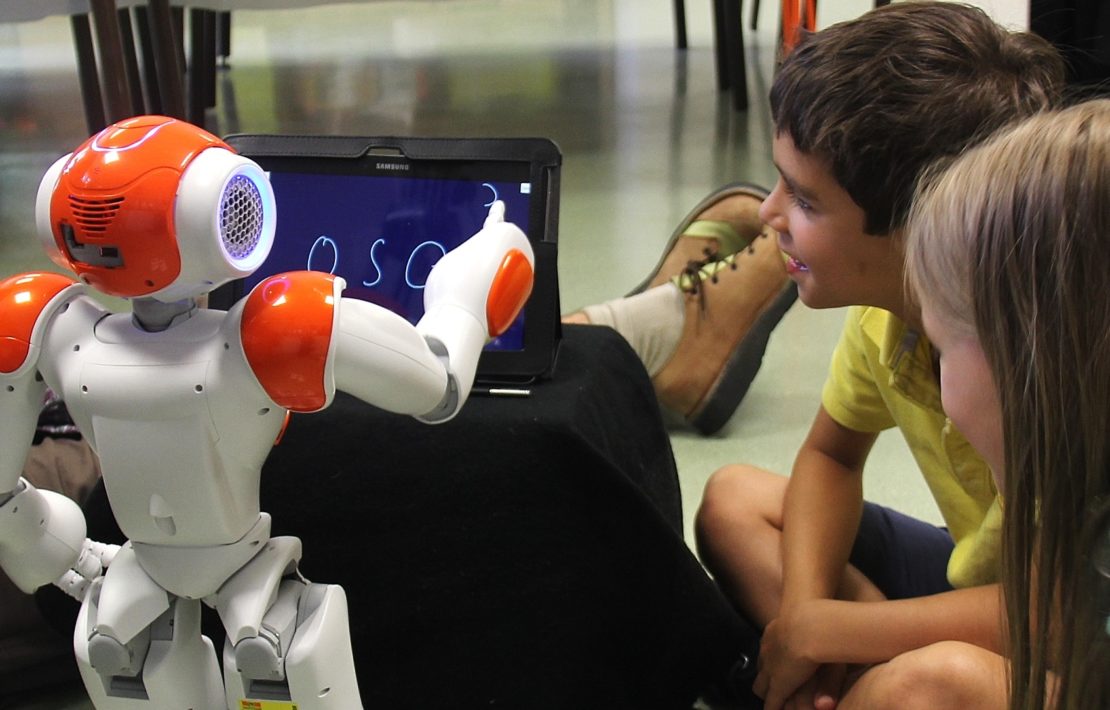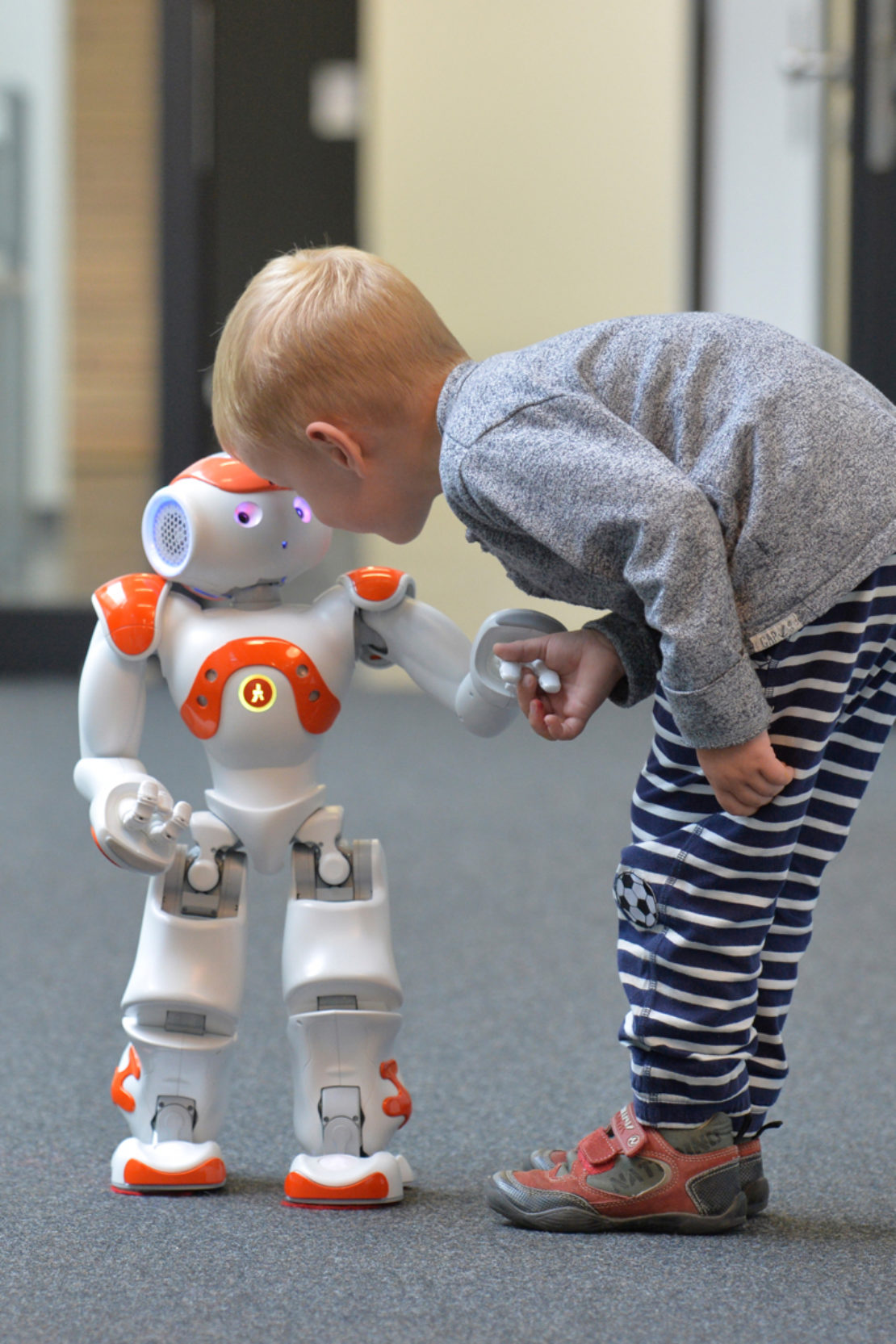Learning to read with Mr Robot

You're five years old. You've been forced to flee your home for a foreign country, and you're confused, anxious and upset. And now, on top of everything else, you have to learn a new language.
Thousands of refugee children find themselves in this situation when they reach Europe. But there aren't enough teachers to give each of them one-to-one tuition in the language of their adopted home.
The L2TOR (pronounced 'el tutor') research project, funded by the EU and run by a consortium of European universities and companies, aims to address this problem by supplementing humans with robots.
Nao, a humanoid robot developed by French firm Aldebaran Robotics, can monitor children's speech and body language, and detect things like joy, sadness, boredom and confusion. It's one of the most advanced examples of a new breed of social robots capable of acting as tutors or companions. These intelligent machines understand when a child is struggling, and offer praise when they answer something correctly. Unlike some human teachers they're also infinitely patient, so children can learn at their own pace.

These attributes make them ideal for teaching languages. "Repetition is very important for language learning," says Dr Paul Vogt, a researcher at Tilburg University, one of the institutions involved in the L2TOR project. "It helps you to recognise patterns, and a robot can help with that."
Fifteen language lessons are in development, covering vocabulary and simple grammatical structures. In July, the Tilburg University team completed its first experiment, which examined the best way for the robot to communicate with three-year-old Dutch children learning English. The goal was to ensure the children interacted with it in a safe and pleasant way, while also gaining some educational benefits.
"We found that children don't always accept a robot that suddenly starts moving and speaking," Dr Vogt explains. "You need to tell children a story that will prepare them for interacting with it."
Unlike some human teachers they're also infinitely patient, so children can learn at their own pace
In the case of the CoWriter project, created by the Computer-Human Interaction Lab in Learning and Instruction (CHILI), the story centres around a robot's attempts to master handwriting. Children are encouraged to help the robot by preparing a word with small magnet letters, which the robot copies on to a tablet. The child corrects any poorly formed letters with a stylus, either rewriting the whole word or just the letter.
It's a pedagogic technique called learning by teaching, which is proven to boost children's self-esteem and motivation. "Often that's the biggest problem they have," says Wafa Johal, a researcher working on CoWriter, "and this really helps them gain confidence."
Because they feel responsible for the robot's progress the children make a considerable effort to help it improve its handwriting, while simultaneously developing their own skills. The robot can also be programmed to address the particular difficulties of each student – drawing a 'P' that is barely readable, for example, then gradually improving it over time.
Sign up to our newsletter
Although CoWriter is still in the prototype stage, around 70 students ranging from six to eight have already used it in their lessons. Tega, a squishy, muppet-like robot created by MIT, has also been getting a workout in the classroom, helping US pre-school children to learn Spanish. It's powered by an Android smartphone, and can stretch and wobble and convey a wide range of emotions through sound and expressive animations. A toucan character on a tablet teaches the children new words, while Tega provides hints and encouragement.
The researchers found that Tega's physical behaviour – nodding or leaning forward as if to check on the child's progress – had a significant effect on the child's positive feelings towards it. In a similar way, the expressive traits of humanoid robots such as Milo, which is designed to help autistic children improve their social and communication skills, appeal to children who often struggle to read the emotions of their peers and teachers. The robot is impossible to offend, which removes much of the anxiety the child might feel when engaging with another person.
However, should robots take on a bigger teaching role in future, there will likely be questions about how the information they collect impacts on children's privacy, not to mention the ethics of creating machines expressly designed to convince children to like or even bond with them. For instance, what effect will it have on a child's emotional development if they believe a robot cares for them, only to discover it is merely programmed to give that impression?
For now these concerns remain purely speculative. Researchers developing teaching robots stress that the machines they're working on aren't intended as replacements for human teachers; they see them as learning companions, supplementary educational tools tailored to a child's individual needs.
Even so, they might make all difference to a child from an immigrant family who's struggling to learn a new language. "We can't give each individual a human tutor," says Dr Vogt. "But we might be able to give them a robot one."